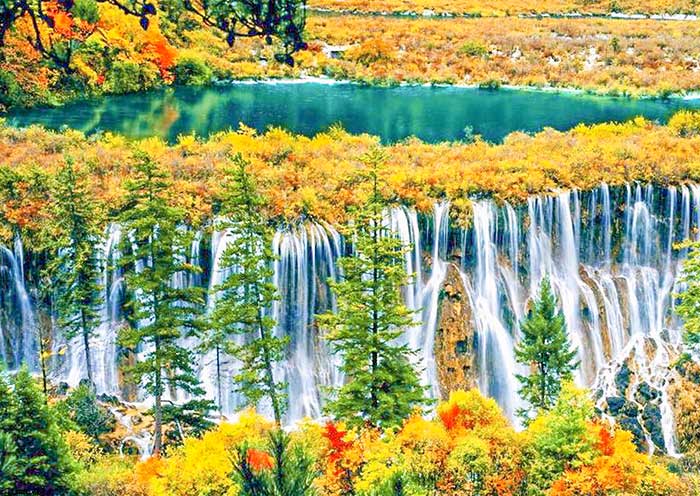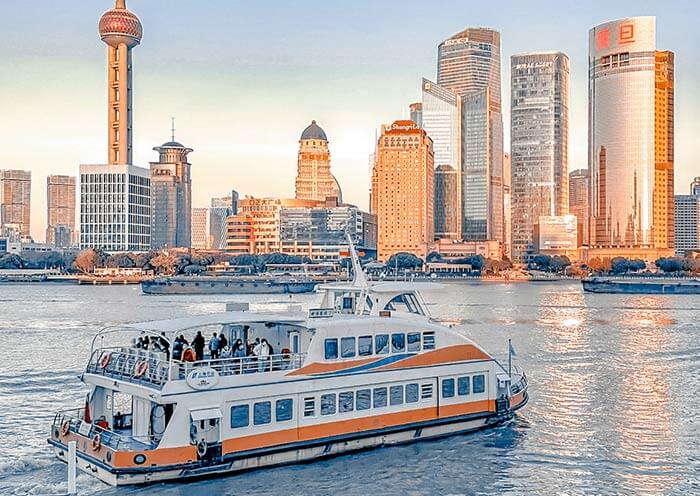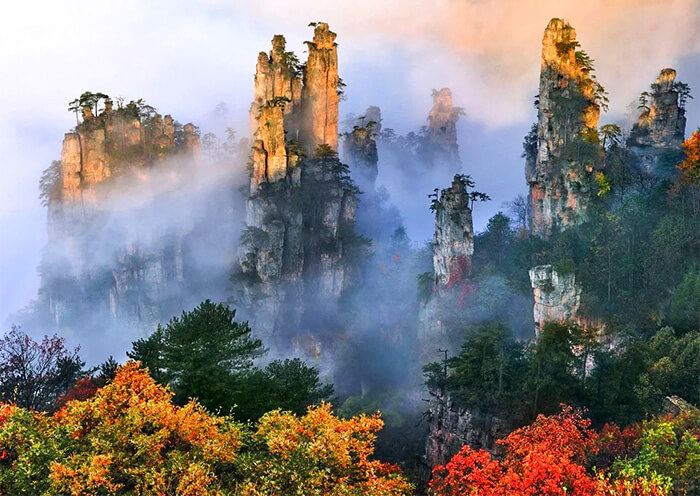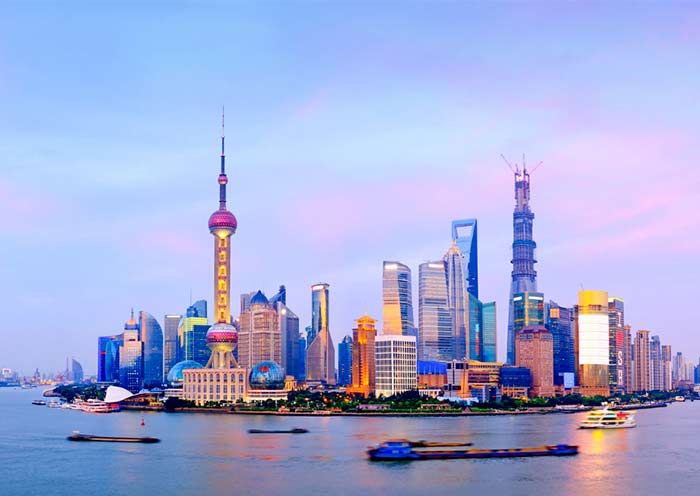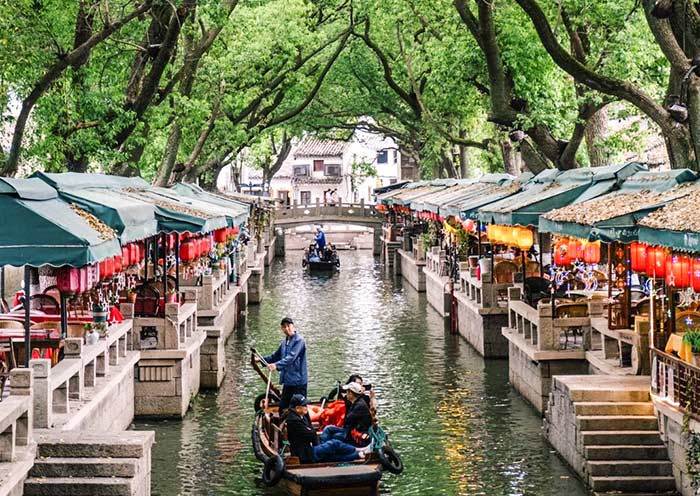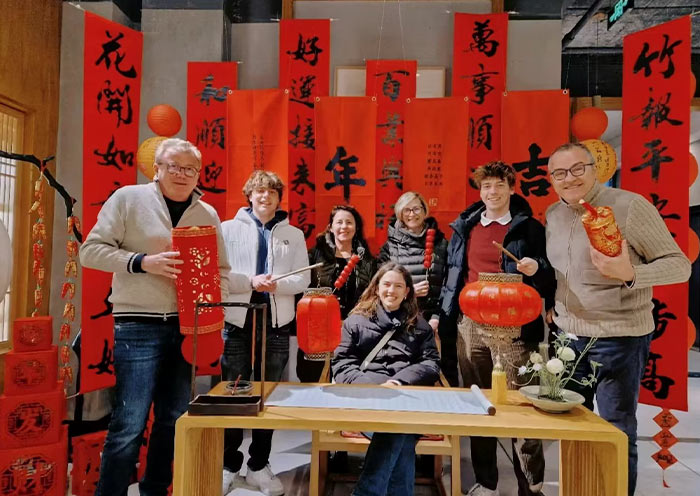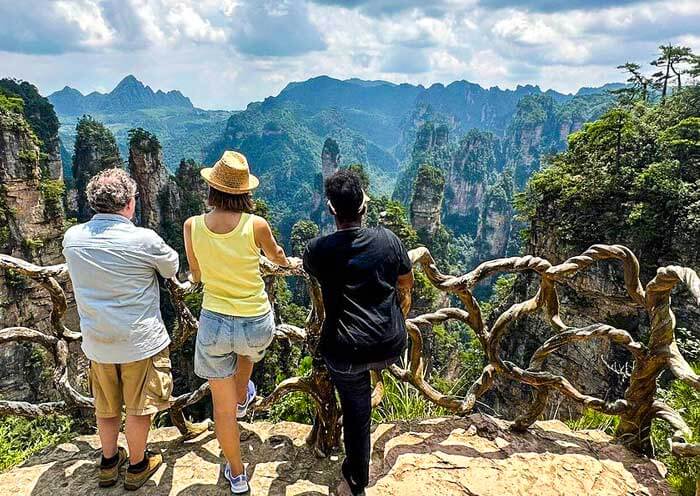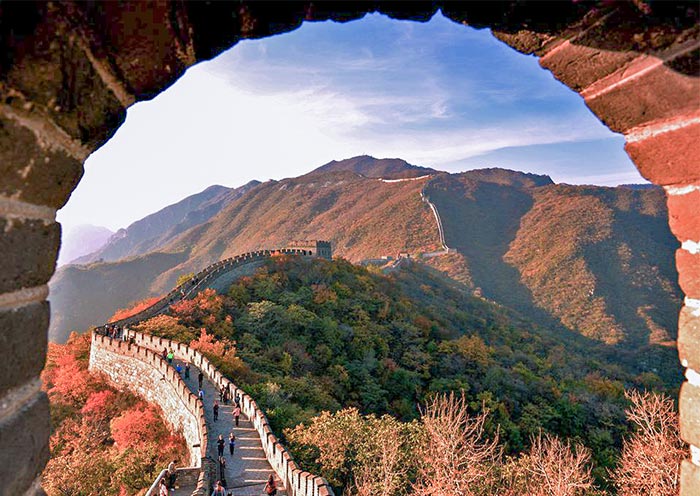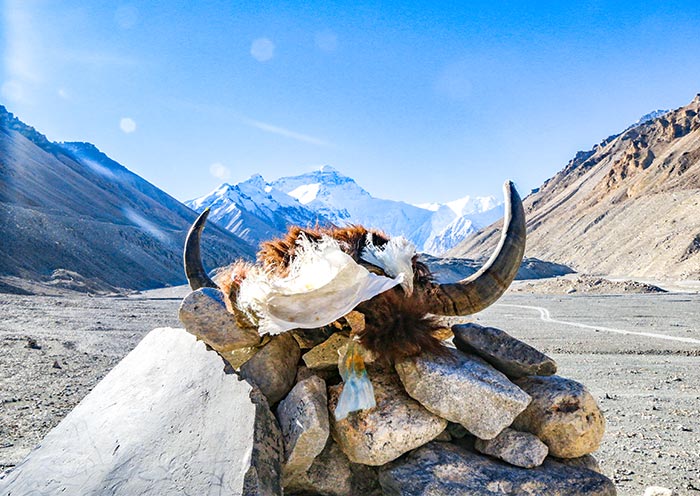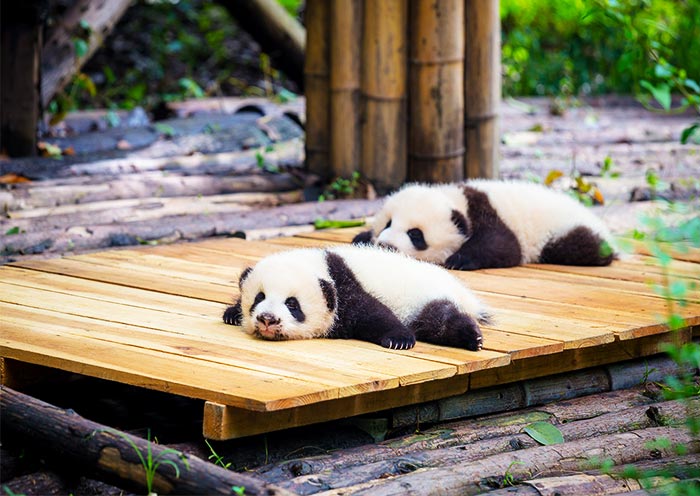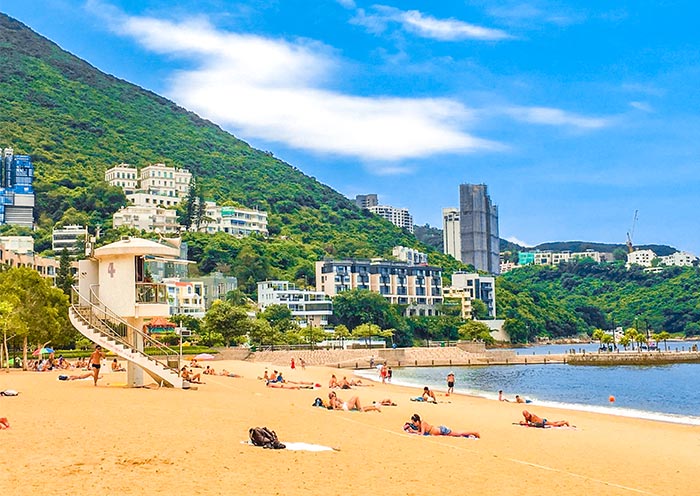China UNESCO World Cultural Heritage Sites (40)
No.1 Forbidden City and Mukden Palace
Forbidden City in Beijing, a UNESCO World Heritage Site since 1987, was the imperial residence and political nucleus of China for nearly half a millennium. Its unparalleled architecture and vast collections of art and artifacts epitomize the pinnacle of traditional Chinese palatial design.
The Mukden Palace in Shenyang, similarly honored in 2004, stands as another regal testament to the Qing dynasty's early history. Visiting these sites offers a profound insight into the opulent lifestyles of emperors and a deeper appreciation for cultural and political heritage in China.
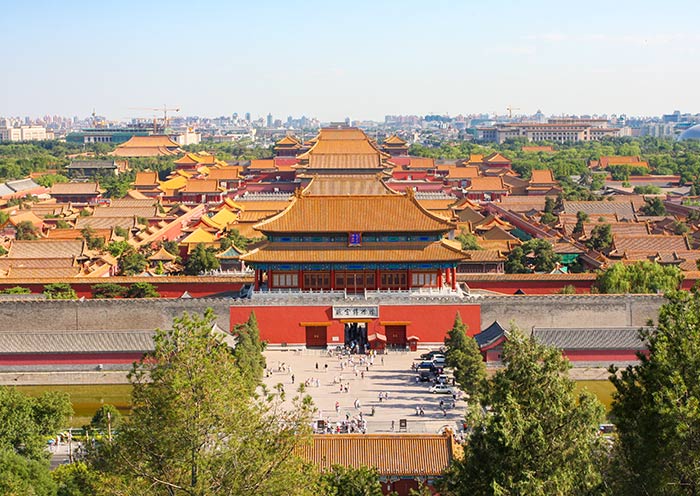
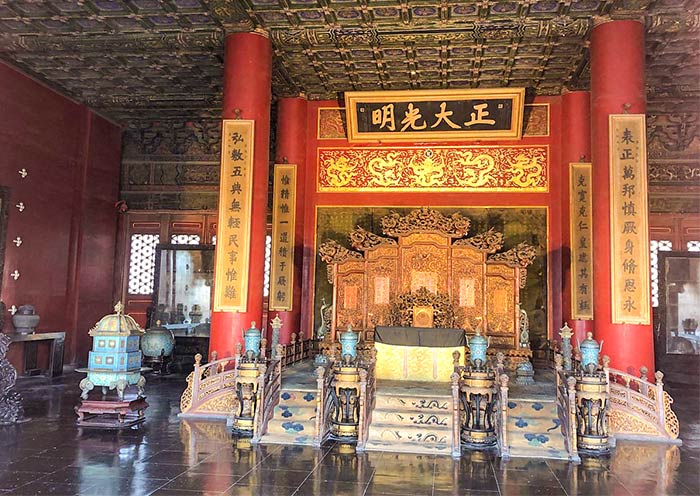
No.2 Mausoleum of the First Qin Emperor
The Mausoleum of the First Qin Emperor, a UNESCO World Heritage Site since 1987, is located in Xi'an. This site is renowned for the Terracotta Army, a collection of terracotta sculptures depicting the armies of Qin Shi Huang, the first Emperor of China. The mausoleum is a testament to the emperor's power and influence, constructed to serve him in the afterlife. It draws visitors worldwide who are eager to witness the impressive scale of the burial complex and its detailed life-size figures, revealing the military prowess and cultural richness of ancient China.
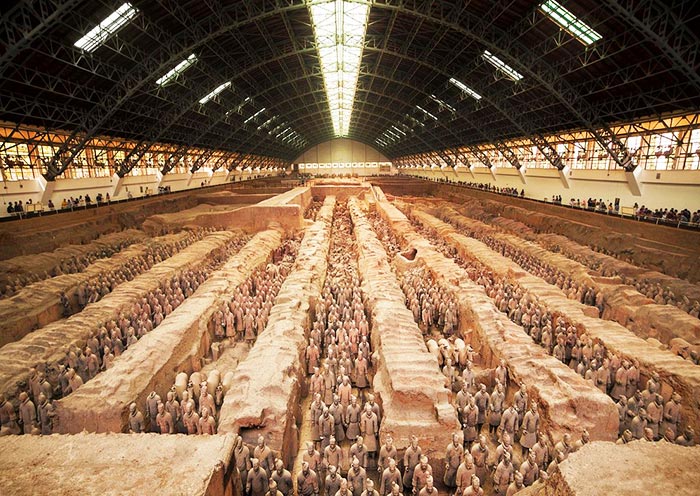
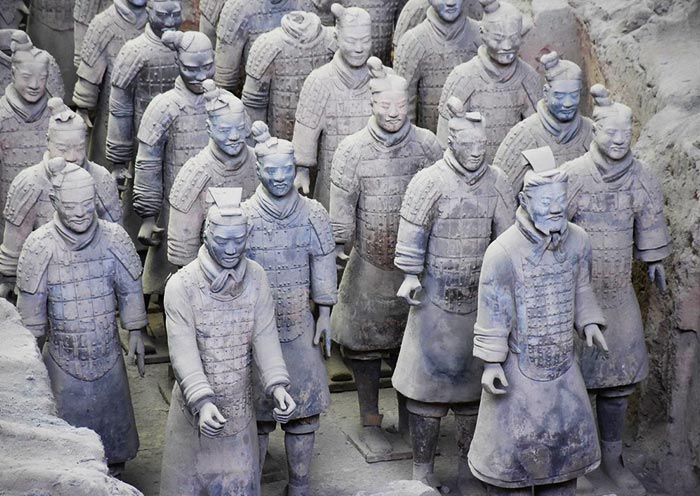
No.3 Mogao Caves
Designated as a UNESCO World Heritage Site in 1987, the Mogao Caves, also known as the Thousand Buddha Grottoes, are situated near Dunhuang on the Silk Road. This network of 492 temples carved into cliff faces is a treasure trove of Buddhist art, spanning a thousand years of history. The caves are famous for their intricate frescoes and statues that reflect a confluence of religious, cultural, and intellectual influences from various periods. The Mogao Caves are a magnet for scholars and tourists alike, who come to marvel at the well-preserved paintings and the glimpse they offer into the evolution of Buddhist culture in China.
No.4 The Great Wall
Since 1987, the Great Wall of China has been treasured by UNESCO, a serpentine marvel stretching over 13,000 miles through China's epic scenery, telling endless tales. Built as a bulwark to shield the Chinese nation and its empires from invasions, it stands as a vivid testament to the Chinese spirit's immortality. Today, the Wall beckons adventurers from across the globe for an exhilarating climb and a journey into history. It's a testament to resilience and a popular pilgrimage that connects people with the enduring legacy of China.
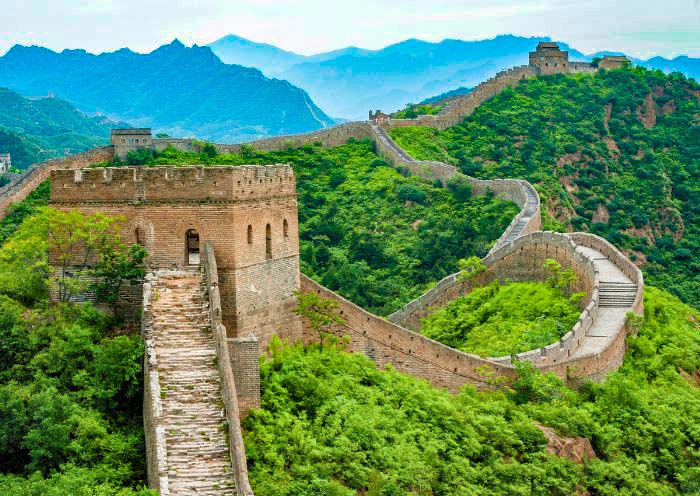
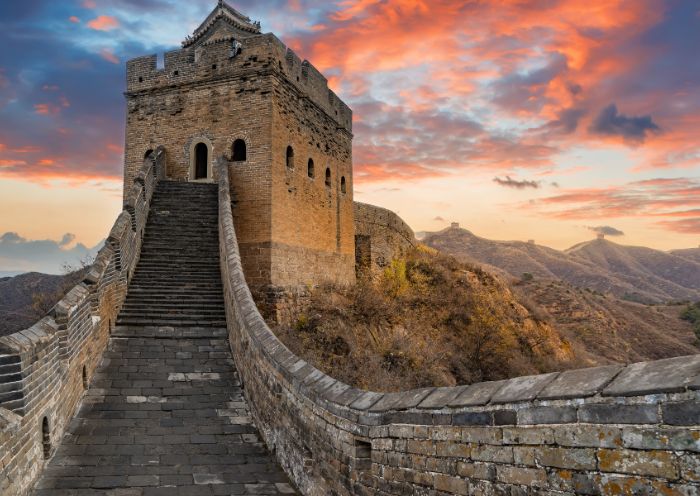
2 Days Beijing Great Wall Day & Night Tour to Mutianyu & Simatai
2 Days Wild Beijing Great Wall Hiking Tour: Gubeikou, Jinshanling, Simatai West
3 Days In-depth Beijing Great Wall Hiking Tour: Jiankou to Mutianyu & Gubeikou-Jianshanling-Simatai
4 Days Beijing Tour: City Highlights, Great Wall Night Views & Gubei Water Tour
5 Days Beijing Culture Tour with Great Wall, Imperial Palaces & Museum
No.5 Peking Man Site at Zhoukoudian
The Peking Man Site at Zhoukoudian, located on the outskirts of Beijing, is a window into prehistoric China. Recognized by UNESCO in 1987, this site is famous for the discovery of the Homo erectus pekinensis, or Peking Man, providing invaluable insight into early human evolution. These ancient limestone caves hold secrets of our ancestors who lived here some 750,000 years ago. Visitors are captivated by the thought of stepping on the same ground where early humans once thrived, making tools and harnessing fire.
No.6 Chengde Mountain Resort and its Outlying Temples in Chengde
The Chengde Mountain Resort, a UNESCO site since 1994, was the Qing Dynasty's summer sanctuary. With serene gardens, the resort harmoniously blends with nature. Nearby, the Eight Outer Temples showcase a cultural mosaic of architectural styles. This tranquil haven in Hebei province offers a glimpse into imperial leisure and spiritual devotion.
No.7 Temple and Cemetery of Confucius and the Kong Family Mansion in Qufu
In Qufu, Shandong, the Temple and Cemetery of Confucius and the Kong Family Mansion stand as a tribute to Confucius, revered philosopher of China. This UNESCO site, recognized in 1994, offers a glimpse into Confucianism's profound impact on Chinese and East Asian culture. Visitors can explore the temple, walk the peaceful cemetery where Confucius rests, and view the historic mansion of his descendants, experiencing a place where respect for knowledge and tradition has endured for millennia.
No.8 Ancient Building Complex in the Wudang Mountains
The Ancient Building Complex in the Wudang Mountains, a UNESCO site since 1994, harmoniously blends Taoist temples and palaces with the stunning natural scenery of Hubei Province. Renowned as a center for Taoism and the birthplace of Tai Chi, this sacred site offers a peaceful retreat into spiritual and martial traditions amidst the backdrop of majestic peaks of China.
No.9 Historic Ensemble of the Potala Palace, including the Jokhang Temple and Norbulingka
The Potala Palace, Jokhang Temple, and Norbulingka are UNESCO sites in Lhasa, Tibet, symbolizing Tibetan Buddhism and cultural heritage. The Potala Palace is an architectural marvel, the Jokhang Temple is the spiritual heart of Tibet, and Norbulingka is a picturesque summer retreat of the Dalai Lamas. Together, they offer a profound glimpse into Tibetan religion and art.
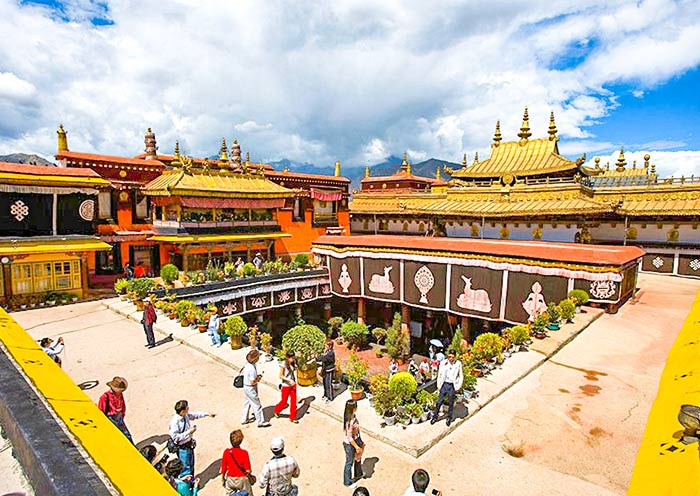
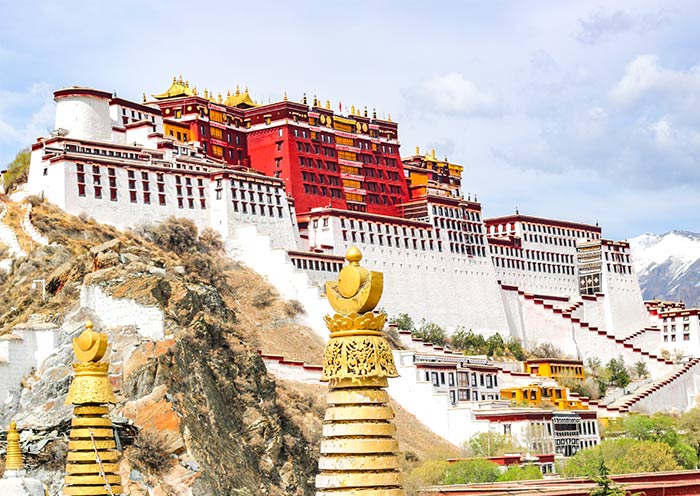
No.10 Mountain Lu National Park
Lushan, or Mountain Lu National Park, a UNESCO World Heritage site recognized in 1996, is renowned for its stunning natural beauty and historical significance in Jiangxi Province, China. Check Top 20 China National Parks ->>
This area is also celebrated for its rich cultural heritage, with ancient temples, villas, and academies dotting the landscape. The mountain has played a pivotal role in the development of Buddhism, Taoism, and Chinese educational thought.
No.11 Old Town of Lijiang
The Old Town of Lijiang, a UNESCO World Heritage site since 1997, is a historic urban center in Yunnan Province, China. It is renowned for its orderly system of waterways and bridges, a unique blend of cultures, and well-preserved ancient buildings.
The town is a testament to its rich heritage, with its cobblestone streets, wooden houses, and the backdrop of the magnificent Jade Dragon Snow Mountain.
No.12 Ancient City of Ping Yao
Pingyao Ancient City, a well-preserved ancient city in Shanxi Province, China, captures the essence of Chinese history like few other places. Recognized by UNESCO in 1997, this city is a snapshot of imperial architecture and economic life spanning several dynasties, particularly during the Ming and Qing periods.
The vibe in Ping Yao is one of authenticity; it's a place where you can peek into courtyards that seem unchanged by time, visit ancient shops where merchants once bartered. It's a living museum flaunting old bank buildings that whisper tales of Ping Yao's heyday as a financial center.
No.13 Classical Gardens of Suzhou
The Classical Gardens of Suzhou, located in Jiangsu Province, are renowned for their sophisticated design, merging natural beauty with manmade artistry. These gardens, recognized by UNESCO in 1997, are the refined expressions of the harmonious philosophy of classical Chinese garden design.
From the Humble Administrator's Garden with its dreamy lotuses to the Master of Nets Garden, where every window frames a living masterpiece, Suzhou's gardens are a dialogue between stone and water, poetry and pavilion.
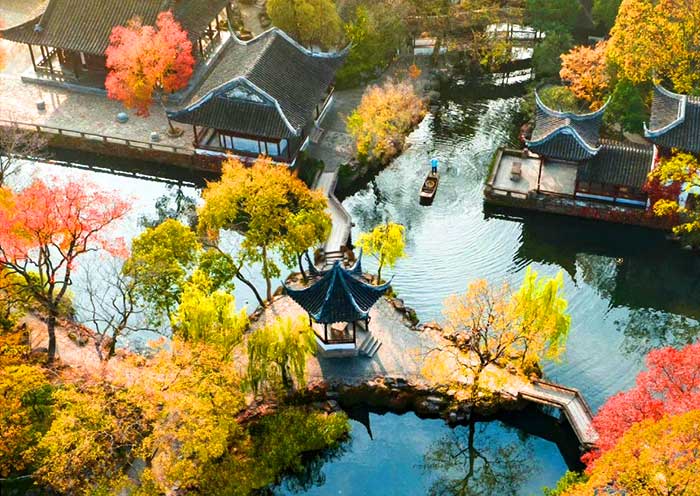
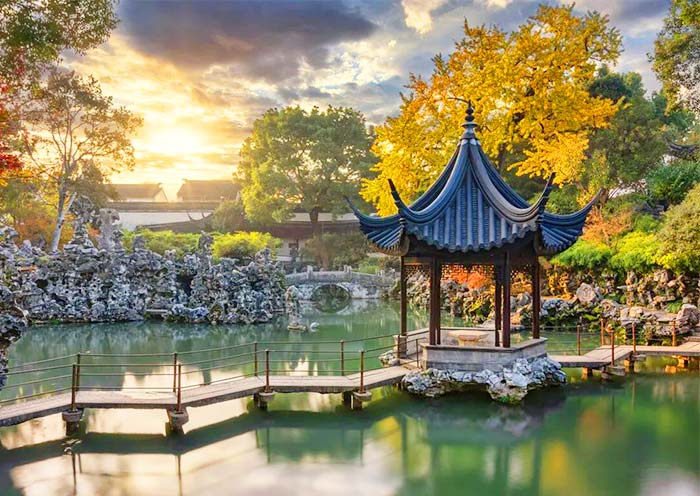
No.14 Summer Palace
The Summer Palace in Beijing is an exquisite royal retreat, renowned for its landscaped gardens, elegant buildings, and tranquil lake. Recognized by UNESCO in 1998, it's a grand showcase of Chinese garden design and a testament to the luxurious lifestyle of the Qing Dynasty.
With its sprawling ensemble of lakes, gardens, and palaces, the Summer Palace serves as a picturesque escape from the city's hustle. The Longevity Hill and Kunming Lake are the stars of the show, with the iconic Seventeen-Arch Bridge offering postcard-perfect views.
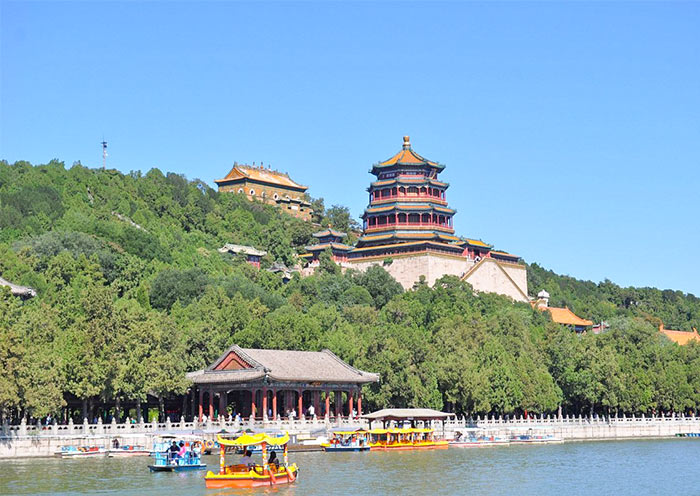
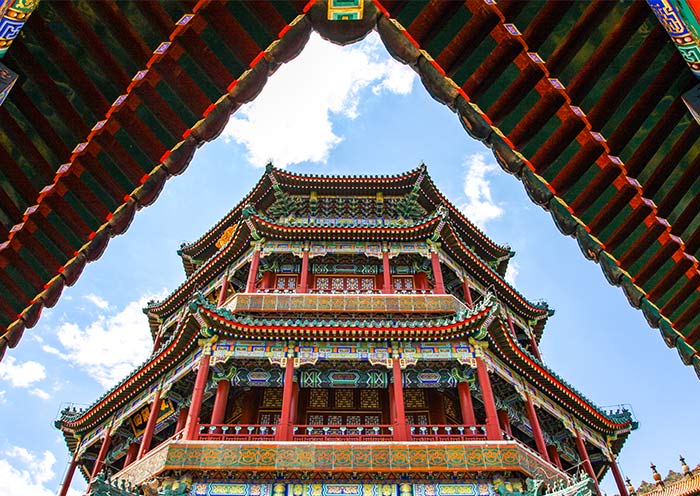
No.15 Temple of Heaven
The Temple of Heaven in Beijing, inscribed by UNESCO in 1998, is more than a temple—it's a celestial stage where the emperors of the Ming and Qing dynasties played their role as Sons of Heaven. Here, in this vast complex of sacrificial buildings set in a majestic park, they performed elaborate rituals to ensure the heavens would grant their empire good harvests.
The architecture is a cosmic diagram, with the Hall of Prayer for Good Harvests as its gem—a triple-gabled circular building that seems to be a direct hotline to the sky.
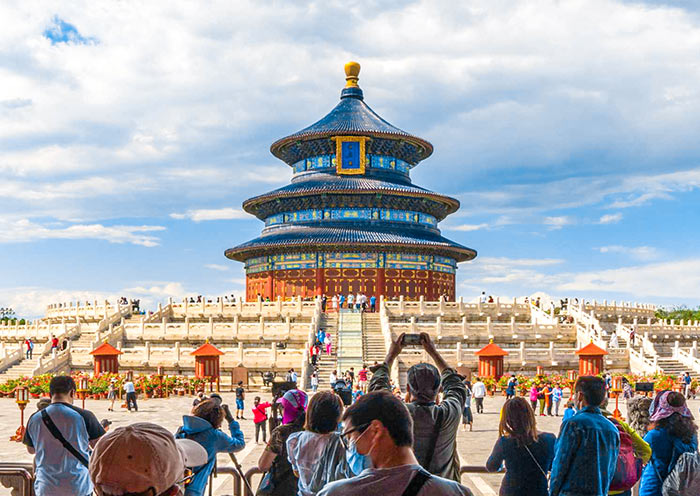
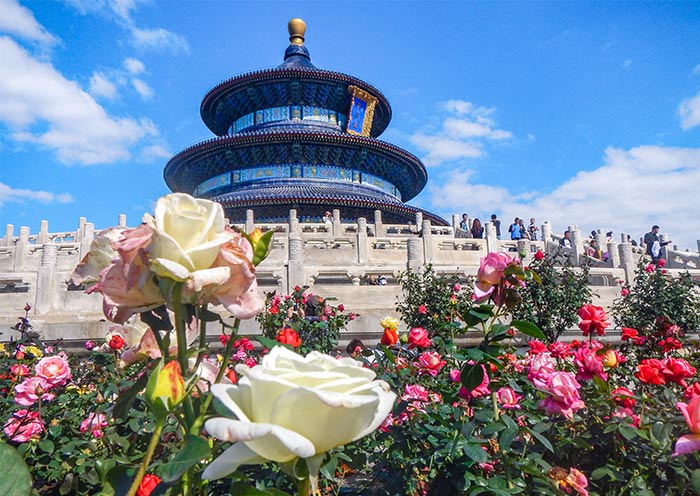
No.16 Dazu Rock Carvings
The Dazu Rock Carvings are a series of extraordinary religious sculptures and carvings located in Chongqing Municipality, China. Inscribed on the UNESCO World Heritage list in 1999, these works date from the 9th to the 13th centuries and are spread across 75 protected sites.
With thousands of statues, ranging from monumental Buddhas to delicate figures. The Beishan and Baodingshan sites are particularly famed for their intricate and lifelike representations of religious figures and moral teachings.
No.17 Mount Qingcheng and the Dujiangyan Irrigation System
Mount Qingcheng and the Dujiangyan Irrigation System, located in Sichuan Province, make up a UNESCO World Heritage site.
Mount Qingcheng is revered as one of the birthplaces of Taoism, Indigenous religion and philosophy of China. It's a place steeped in mystical lore and natural beauty, where one can easily understand why Taoist hermits chose this site to ponder the eternal.
In the valley below lies the Dujiangyan Irrigation System, a marvel of ancient Chinese engineering. Constructed around 256 BCE, this non-dam irrigation system still functions today, controlling the waters of the Minjiang River and transforming the surrounding area into a fertile haven.
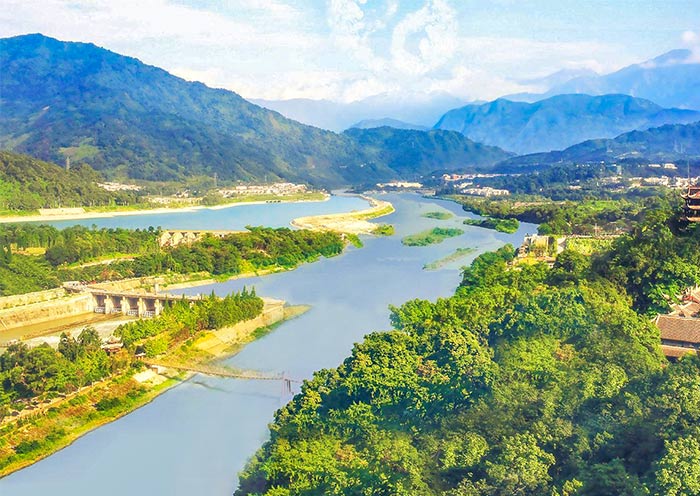
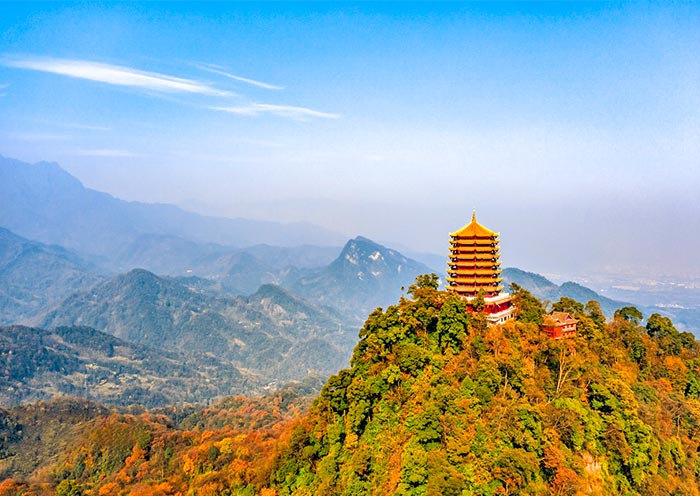
No.18 Ancient Villages in Southern Anhui – Xidi and Hongcun
The Ancient Villages of Xidi and Hongcun in Southern Anhui Province are recognized as UNESCO World Heritage sites for their exceptional preservation of Ming and Qing dynasty rural architecture and traditional village life.
Xidi, with its narrow cobblestone lanes and well-preserved residences, showcases intricate wood carvings and elegant stone archways. It's a village that tells stories of the Huizhou merchants' past prosperity through its grand family halls and ancestral temples.
A stone's throw away, Hongcun stands as a masterpiece of town planning, with a water system designed to resemble the shape of an ox. The calm waters of the Moon Pond in the heart of the village reflect the ancient dwellings that surround it, creating a scene that looks like a still from an old Chinese painting.
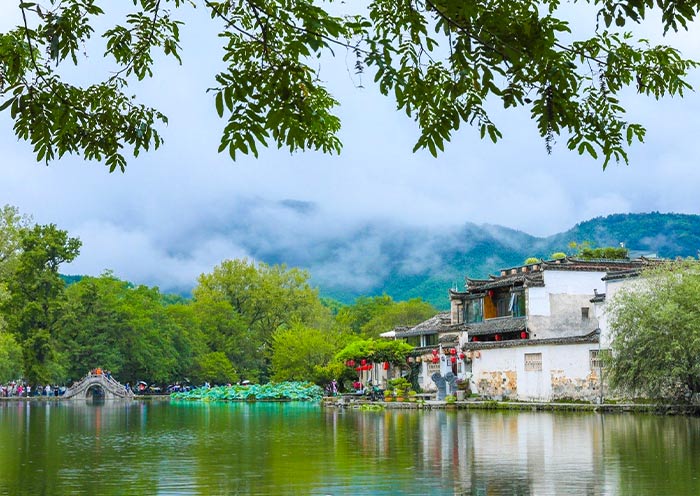
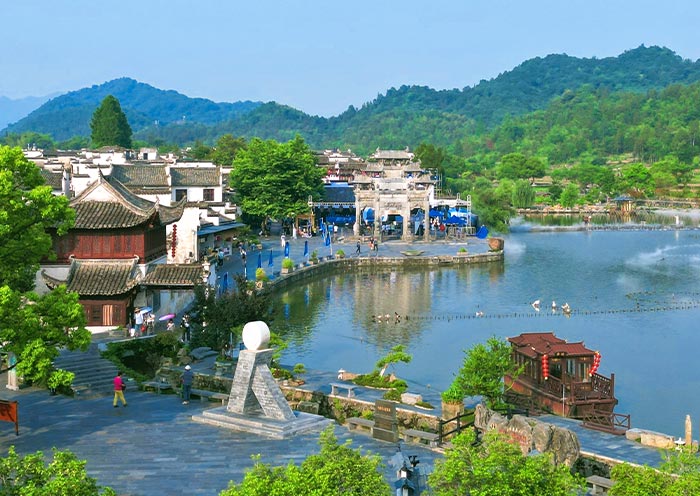
4 Days Best Huangshan Tour | Yellow Mountain and Hongcun & Xidi Ancient Villages
3 Days Huangshan Essence Tour: Yellow Mountain & Hongcun Village, Tunxi Old Street
3 Days Huangshan Budget Tour: Yellow Mountain & Hongcun Village - A Cost-Effective Way
4 Days Huangshan Relaxing Tour: Refresh Yourself in Yellow Mountain's Splendor & Idyllic Villag
No.19 Longmen Grottoes
The Longmen Grottoes, etched into the limestone cliffs of the Yi River in Henan Province, China, are a breathtaking spectacle of ancient Buddhist art. Inscribed as a UNESCO World Heritage site in 2000, they boast tens of thousands of statues of Buddha and his disciples, carved during the Northern Wei and Tang dynasties, between the 5th and 8th centuries.
Visitors to Longmen are met with an awe-inspiring array of over 2,300 caves and niches that hold more than 100,000 Buddhist images, ranging from tiny, intricate carvings to colossal statues reaching up to 17 meters in height. The Fengxian Temple, with its monumental Vairocana Buddha, is the crowning jewel among these divine sculptures.
No.20 Imperial Tombs of the Ming and Qing Dynasties
The Ming Tombs are located near Beijing, with the Qing Tombs in Hebei and Liaoning. Key sites include the Ming Dynasty's Thirteen Tombs and Qing's Eastern and Western Qing Tombs.
No.21 Yungang Grottoes
The Yungang Grottoes, a UNESCO World Heritage site since 2001 in Shanxi, China, feature 252 caves with over 51,000 statues, epitomizing 5th and 6th-century Buddhist cave art.
The Yungang Grottoes showcase a fusion of Buddhist art with Greek and Persian influences, as well as traditional Chinese art, reflecting the cultural exchange along the ancient Silk Road.
No.22 Capital Cities and Tombs of the Ancient Koguryo Kingdom
The Capital Cities and Tombs of the Ancient Koguryo Kingdom in China encompass archaeological sites from the 3rd to 7th centuries, featuring cities and 40 tombs with distinctive wall paintings, reflecting the cultural and historical significance of the Koguryo civilization. Inscribed in 2004 by UNESCO.
No.23 Historic Centre of Macau
The Historic Centre of Macau, a UNESCO World Heritage site since 2005, is a collection of over twenty locations that testify to the successful fusion of Chinese and Portuguese cultures. Macau's unique assortment of buildings, streetscapes, and piazzas combine to offer a distinct European character on the South China Coast. It epitomizes the interchange of Western and Eastern values, visible in its architecture, street design, and urban planning.
No.24 Yinxu
Yinxu, located in Henan Province, China, is the site of the ancient city of Yin, the last capital of China's Shang Dynasty (1300–1046 BC). Inscribed as a UNESCO World Heritage site in 2006, Yinxu is renowned for its archaeological discoveries, including palatial structures, royal tombs, and the remains of sacrificial sites.
It is also the site where the earliest known Chinese writing was found, inscribed on oracle bones – turtle plastrons and ox scapulae used for divination.
No.25 Kaiping Diaolou and Villages
The Kaiping Diaolou and Villages, inscribed by UNESCO in 2007, are located in Guangdong Province, China. These multi-storied defensive village houses were built in the late 19th and early 20th centuries, combining Chinese architectural styles with Western elements, reflecting the fusion of East and West. They were constructed by returning Kaiping overseas Chinese who brought back the cultural influences they encountered abroad.
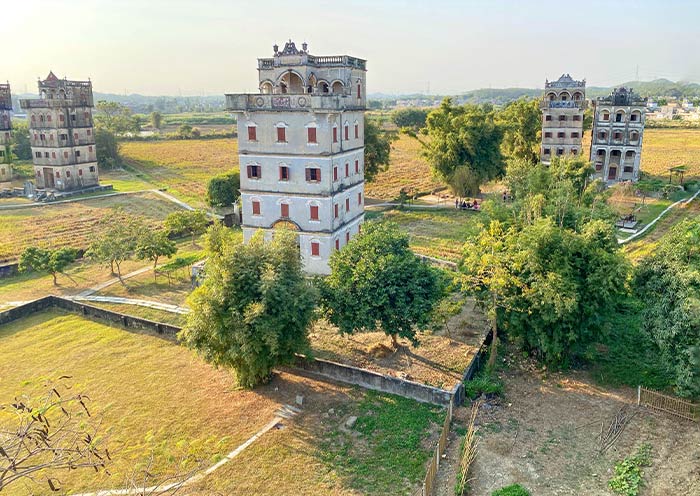
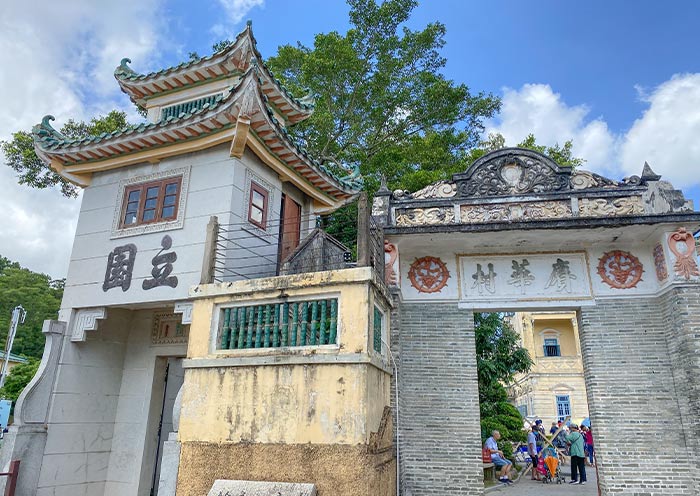
No.26 Fujian Tulou
The Fujian Tulou, also known as Hakka Tulou, are enclosed clan residences, exemplifying the Hakka's architectural ingenuity. Added to the World Heritage list in 2008, their fame grew internationally. The most famous is the Tianluokeng Tulou cluster(Nanjing Tulou), with a square Tulou surrounded by four round ones, and the "King of Tulou," Chengqi Building(Yongding Tulou), home to 800 people.
Learn more about "How to reach the Fujian Tulou"
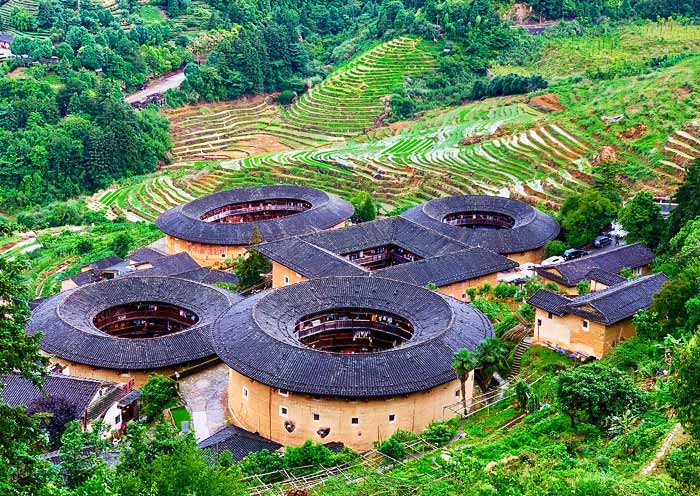
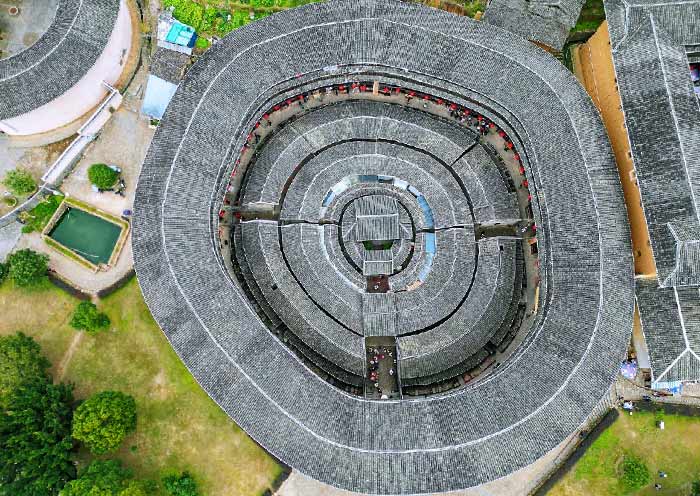
4 Day Xiamen Gulangyu & Fujian Tulou In-depth Tour: Nanjing Tulou, Yongding Tulou - World Heritages
2 Days Fujian Tulou In-depth Tour: Explore Nanjing Tulou, Yongding Tulou & Hakka Culture
2 Days Xiamen and Tulou Tour: From Gulangyu to Fujian Tulou - Architectural Feast
1 Day Nanjing Tulou Tour: From Xiamen to the Hometown of Mulan - Fujian Tulou
No.27 Mount Wutai
Mount Wutai, also known as Wutai Shan or Five Terrace Mountain, is a sacred Buddhist mountain located in Shanxi Province, China. It was inscribed as a UNESCO World Heritage site in 2009. Recognized as one of the Four Sacred Mountains in Chinese Buddhism, Mount Wutai is a major pilgrimage site, celebrated for its cultural, historical, and religious significance.
The site comprises five flat-topped peaks, symbolic of the five wisdoms of Buddha, and is home to many of China's most important monasteries and temples. These include the Xiantong Temple, Tayuan Temple, and Pusading Temple.
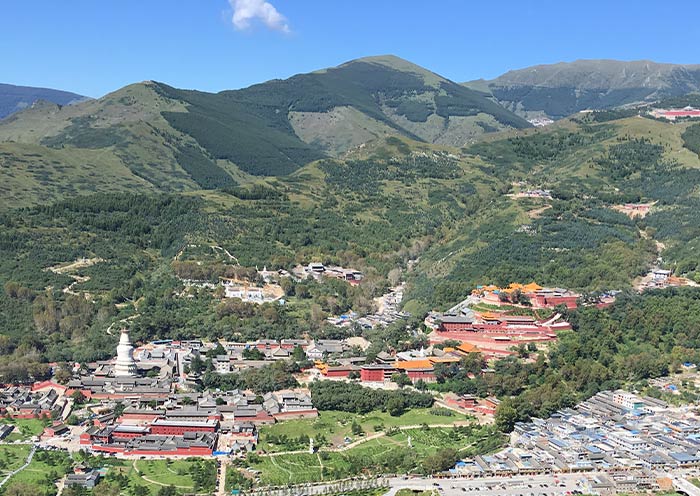
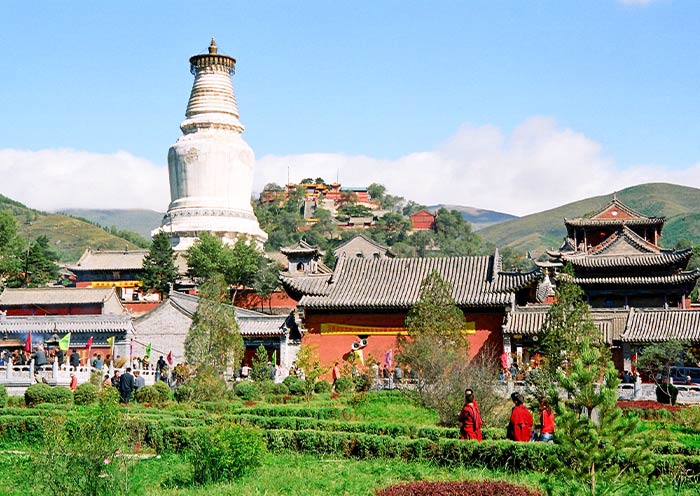
No.28 Historic Monuments of Dengfeng in "The Centre of Heaven and Earth"
The Historic Monuments of Dengfeng in "The Centre of Heaven and Earth," inscribed as a World Heritage site in 2010, encompass ancient religious and educational buildings around Mount Song in Henan, China, including the famous Shaolin Temple. They reflect the region's spiritual and architectural heritage.
No.29 Hangzhou West Lake
West Lake in Hangzhou, inscribed as a UNESCO World Heritage site in 2011.
West Lake in Hangzhou is a must-see for travelers. It's a spot where you can enjoy boat rides, stroll around the lake, or cycle its paths to take in the iconic views like the Broken Bridge and Leifeng Pagoda. Don't miss out on the local tea houses for a taste of Dragon Well tea. If you're into photography or just want some peace, this is your spot. Plus, it's easy to get to, right in the heart of Hangzhou.
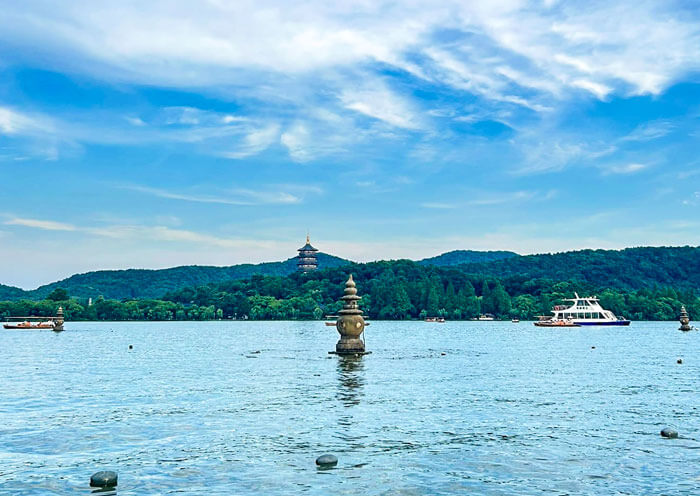
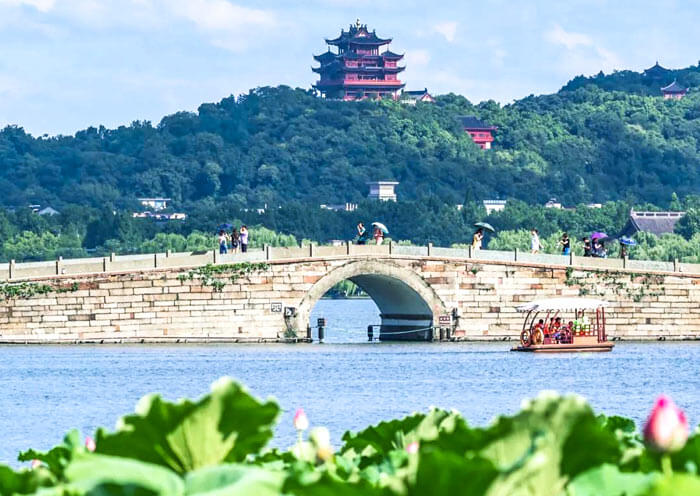
No.30 Site of Xanadu
The Site of Xanadu, located in Inner Mongolia, China, was the capital of Kublai Khan's Yuan dynasty. Inscribed as a UNESCO World Heritage site in 2012, it showcases the integration of Mongolian and Han cultures and the remains of palaces, temples, tombs, and the nomadic Mongolian and farming Han Chinese civilizations.
No.31 Cultural Landscape of Honghe Hani Rice Terraces
The Honghe Hani Rice Terraces, located in Yunnan, China, are an extraordinary cultural landscape carved over millennia by the Hani people. Inscribed by UNESCO in 2013, these terraces follow the contours of the Ailao Mountains, creating a stunning mosaic of water-filled paddies.
No.32 Grand Canal
The Grand Canal of China is a vast waterway system that was declared a UNESCO World Heritage site in 2014. It's the world's longest artificial river, stretching over 1,000 miles from Beijing in the north to Hangzhou in the south.
The Grand Canal boasts landmarks like Hangzhou's Gongchen Bridge, Suzhou's ancient water towns, and the Grand Canal Museum in Yangzhou.
No.33 Silk Roads
The Silk Roads, a UNESCO World Heritage site since 2014, represent an ancient network of trade routes that connected the East and West for centuries.
The Silk Roads were essential in shaping global history, linking traders, merchants, pilgrims, and travelers from China to the Mediterranean Sea. Key sites include the ancient city of Xi'an, the starting point of the Silk Roads; the trading post of Dunhuang with its Mogao Caves; and the desert outpost of Turpan. Along the route, the Tianshan Corridor's fortifications and the cultural melting pot of Samarkand showcase the Silk Roads' dynamic blend of commerce and culture.
No.34 Tusi Sites
Tusi Sites, recognized by UNESCO in 2015, represent the legacy of the Tusi system, governing ethnic minorities in China through local chieftains. Key sites include Laujiajie, Tangya, and Yongshun in Hunan and Hubei provinces, showcasing the integration of ethnic governance within imperial China.
No.35 Zuojiang Huashan Rock Art Cultural Landscape
The Zuojiang Huashan Rock Art Cultural Landscape, inscribed by UNESCO in 2016, consists of spectacular rock art that dates back to the 5th century BCE and represents the life and rituals of the Luoyue people. Found in the Guangxi Zhuang Autonomous Region of China, these pictographs are painted on limestone cliff faces along the Zuojiang River and are remarkable for their vivid depiction of ceremonies, clothing, and local customs.
No.36 Gulangyu
Gulangyu, inscribed as a UNESCO World Heritage site in 2017, is a small island located off the coast of Xiamen, Fujian Province in southeastern China. Known for its rich architectural heritage and car-free environment, the island is a unique blend of cultural influences, showcasing a variety of building styles, including Traditional Southern Fujian Style, Western Classical Revival Style, and Veranda Colonial Style.
Significant landmarks include the Sunlight Rock, Shuzhuang Garden, and a host of consulates and churches. The island is also renowned for its musical tradition, being home to the first piano in China and a museum dedicated to the instrument.
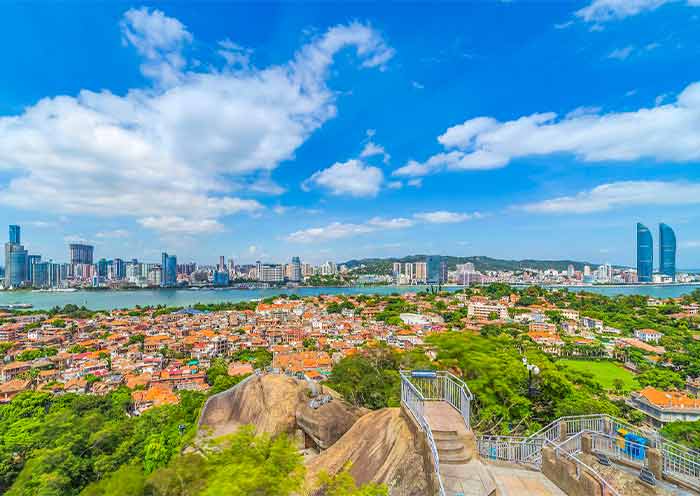
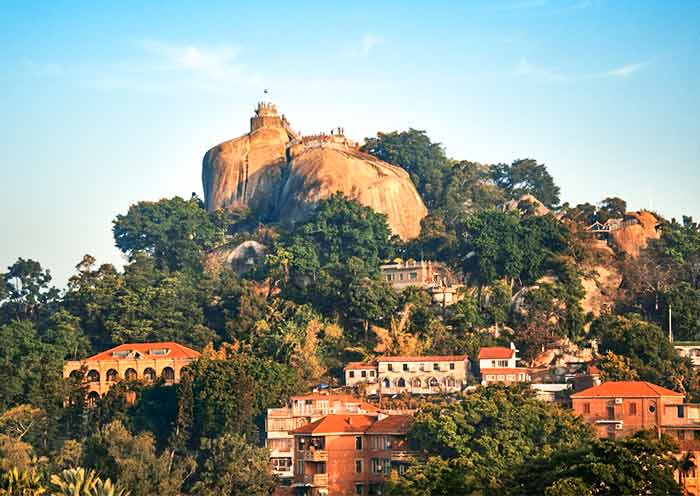
Xiamen Day Tour: Xiamen City Highlights & Gulangyu In-depth Exploration
1 Day Nanjing Tulou Tour: From Xiamen to the Hometown of Mulan - Fujian Tulou
3 Days Wuyishan Tour: UNESCO Heritage Site for Danxia Landscape & Tea Culture
7 Days Fujian Tour to Xiamen, Hakka Tulou & Xiapu Mudflat with Photography Experience
No.37 Archaeological Ruins of Liangzhu City
The Archaeological Ruins of Liangzhu City, recognized by UNESCO in 2019, are about 5,000 years old and located in eastern China. They show the early city planning and water management of China's ancient Liangzhu civilization, known for its unique jade artifacts.
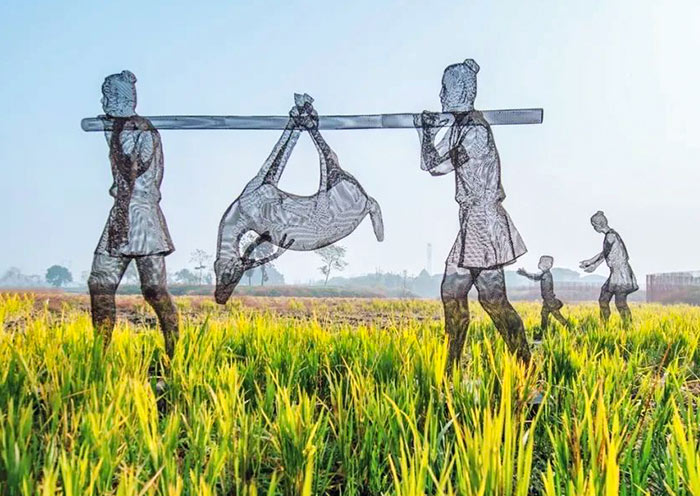
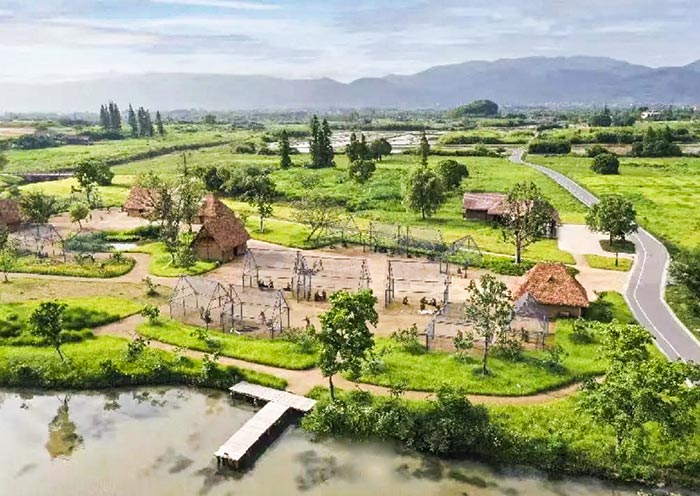
No.38 Quanzhou
Quanzhou, designated as a UNESCO World Heritage site in 2021, was one of the world's largest ports during the Song and Yuan dynasties. Located in Fujian Province, China, it stands as an exceptional testament to the maritime trade and cultural exchanges between China and various coastal countries of Asia, and even beyond, from the 10th to 14th centuries.
The site encompasses eleven key components that include religious buildings reflecting the city's multicultural past, such as the Qingjing Mosque, one of the oldest mosques in China, Shisanhang Archaeological Site, and ancient bridges, pagodas, and administrative buildings.
Uncover the hidden gems of Quanzhou: Top Things to Do in Hanghzou.
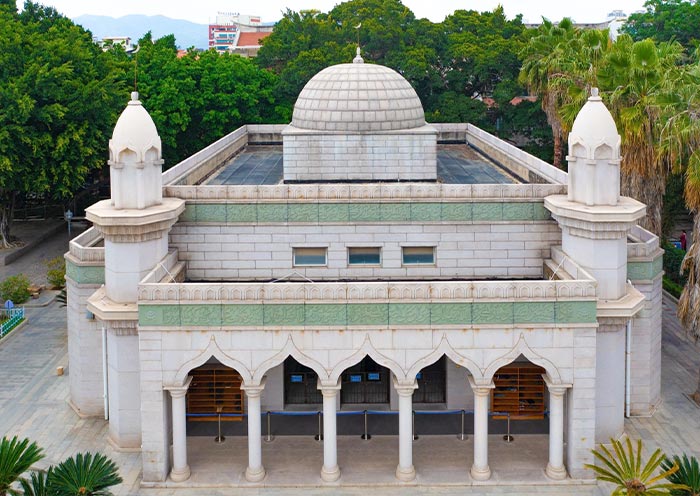
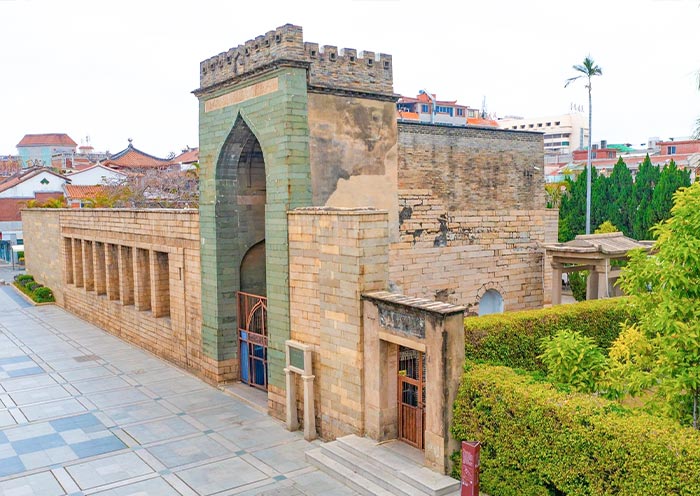
No.39 Cultural Landscape of Old Tea Forests of the Jingmai Mountain in Pu’er
In 2023, it was designated as a UNESCO World Heritage Site, representing an ancient and sustainable form of tea cultivation. Residents, such as the Dai, Aini, and Hani ethnic groups, have likely been growing tea in this way for generations. The techniques and rituals associated with tea cultivation have been passed down from one generation to the next, highlighting the social and cultural significance of tea in these communities.
No.40 Beijing Central Axis
The Beijing Central Axis was listed as a World Cultural Heritage site in 2024. Known as the backbone of Beijing, this axis traces through the old city from north to south, starting at Yongding Gate and ending at the Bell and Drum Towers, spanning 7.8 kilometers. It is the longest and most well-preserved ancient urban axis in the world, comprising five categories of remains including ancient royal palaces, ritual buildings, and urban management facilities.
From the southern end at Yongding Gate and Zhengyang Gate, through the outer city, inner city, imperial city, and palace city, to the north at the Bell and Drum Towers, the selection, layout, urban form, and design of the Beijing Central Axis reflect the ideal capital city model as recorded in "Kaogong Ji" of the "Rites of Zhou." It showcases the ancient Chinese dynastic system and urban planning traditions, bearing witness to the development and evolution of Beijing city.
World Natural Heritage in China (15)
| World Natural Heritage Sites (15 sites) | Year | Location |
|---|---|---|
| Huanglong Scenic and Historic Interest Area | 1992 | Songpan, Sichuan |
| Jiuzhaigou Valley Scenic and Historic Interest Area | 1992 | Jiuzhaigou County, Sichuan |
| Wulingyuan Scenic and Historic Interest Area | 1992 | Zhangjiajie, Hunan |
| Three Parallel Rivers of Yunnan Protected Areas | 2003 | Yunnan |
| Sichuan Giant Panda Sanctuaries | 2006 | Sichuan |
| South China Karst | 2007, 2014 | Yunnan, Guizhou, Chongqing and Guangxi |
| Sanqingshan | 2008 | Yushan County, Jiangxi |
| China Danxia | 2010 | Hunan, Guangdong, Fujian, Jiangxi, Zhejiang, and Guizhou |
| Chengjiang Fossil Site | 2012 | Chengjiang County, Yunnan |
| Xinjiang Tianshan | 2013 | Xinjiang |
| Hubei Shennongjia | 2016 | Hubei |
| Qinghai Hoh Xil | 2017 | Qinghai |
| Fanjingshan | 2018 | Tongren, Guizhou |
| Migratory Bird Sanctuaries along the Coast of Yellow Sea-Bohai Gulf of China | 2019 | Yancheng, Jiangsu |
| Badain Jaran Desert - Sand Mountain and Lake Group | 2024 | Xijiang |
No.41 Jiuzhaigou Valley Scenic and Historic Interest Area
Jiuzhaigou Valley, a UNESCO World Heritage site in Sichuan, China, captivates with its crystal-clear lakes, cascading waterfalls, and stunning peaks. Highlights include the striking Five Flower Lake, known for its vibrant, multicolored waters, and the majestic Pearl Shoal Waterfall.
The best time to visit is autumn, especially from late September to early November, when the foliage creates a spectacular display of color that perfectly complements the blue and green hues of the lakes. The scenery during this season is so enchanting that the valley is likened to a real-life fairyland.
No.42 Huanglong Scenic and Historic Interest Area
Huanglong Scenic Area in Sichuan, China, is renowned for its ethereal landscape of terraced, multi-colored calcite pools. These travertine pools, set against lush green forests and rugged mountains, create a breathtaking tableau. Highlights include the striking, brilliantly colored Five-Color Pond and the expansive Huanglong Temple, which reflects the area's rich Buddhist heritage.
The best time to visit Huanglong is between May and October when the weather is pleasant, and the pools are full, showcasing their dazzling array of colors. Autumn is particularly magical, as the changing leaves provide a vivid backdrop to the already colorful scenery.
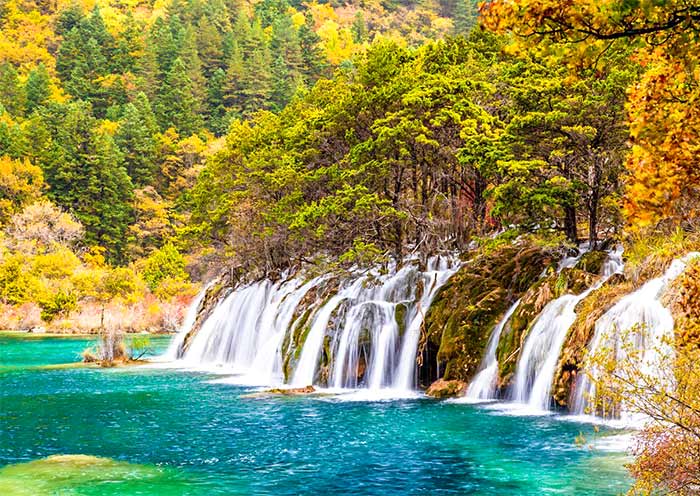
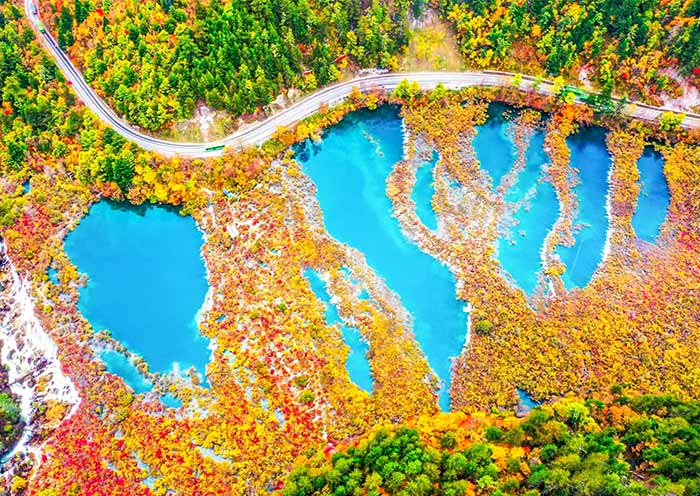
No.43 Wulingyuan Scenic and Historic Interest Area
Wulingyuan Scenic and Historic Interest Area, located in Hunan Province, China, mesmerizes visitors with its over 3,000 quartzite sandstone pillars and peaks, many over 200 meters tall. This otherworldly landscape inspired the floating mountains in the movie "Avatar."
Key highlights include Zhangjiajie National Forest Park, famous for the pillar-like formations, and Tianzi Mountain, offering stunning views of the peaks. The Golden Whip Stream meanders through the area, providing tranquil walking paths.
The best time to visit is from April to June and from September to October.
No.44 Three Parallel Rivers of Yunnan Protected Areas
The Three Parallel Rivers of Yunnan Protected Areas is a UNESCO World Heritage site due to its exceptional biodiversity, unique geological features with deep river gorges, and the fact that it encompasses the confluence of three major Asian rivers running remarkably parallel.
No.45 Sichuan Giant Panda Sanctuaries
The Sichuan Giant Panda Sanctuaries are a World Heritage site due to their critical role in giant panda conservation, housing a significant genetic repository. It includes Wolong, Mt Siguniang, and Jiajin Mountains among its seven nature reserves and nine scenic parks.
Attention all panda enthusiasts! If you're eager to learn about Chengdu Panda Base.
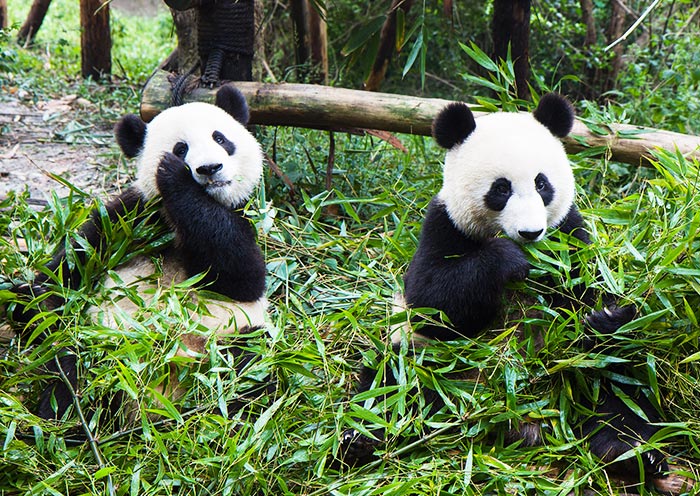
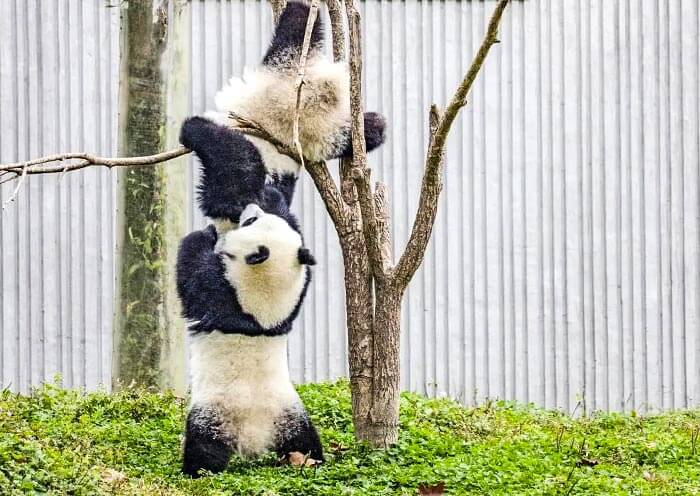
1 Day Chengdu Panda Tour with Leisure Time in Renmin Park & Ancient Streets
2 Days Classic Chengdu Tour: Meet Old & Modern Chengdu
2 Day Dujiangyan Panda Volunteer Tour & Mount Qingcheng Kung Fu Lesson
2 Days Wolong Panda Volunteer Tour - From Chengdu City to Wild Panda Habitat
4 Days Ultimate Panda Tour for Panda Fans (Chengdu - Wolong - Dujiangyan)
No.46 South China Karst
The South China Karst is recognized as a World Heritage site for its extensive and diverse karst formations, including peaks, caves, and subterranean rivers. It encompasses regions like Shilin, Libo, and Wulong among others.
No.47 Sanqingshan
Mount Sanqingshan National Park, a UNESCO World Heritage site in Jiangxi Province, China, is distinguished by its remarkable granite formations. These formations, shaped over millennia, have given rise to a landscape of peaks, cliffs, and unusual rock outcrops, often wreathed in mist. The park is also a biodiversity hotspot, home to varied flora and fauna, thriving amidst the craggy terrain.
No.48 China Danxia
China Danxia refers to a type of petrographic geomorphology found in several regions of China, comprised of red sandstone and characterized by steep cliffs. Which include dramatic red cliffs, natural pillars, ravines, and valleys. The designation covers several areas including the Danxia Mountain in Guangdong, Taining in Fujian, Langshan in Hunan.
No. 49 Chengjiang Fossil Site
The Chengjiang Fossil Site in Yunnan, China, a UNESCO World Heritage site, preserves crucial 530-million-year-old Cambrian marine fossils, offering rare insights into early multicellular life and evolution.
No.50 Xinjiang Tianshan
Xinjiang Tianshan, a UNESCO World Heritage site, is a segment of the Tianshan mountain system in Northwest China. It was recognized for its unique natural beauty, snow-capped peaks, diverse ecosystems, and the remarkable contrast between the arid desert and lush mountain valleys. The site includes spectacular areas such as the Tomur Peak, the Kanas Lake, and the Bayinbuluke grasslands, each contributing to the region's outstanding biodiversity and geological diversity.
No.51 Hubei Shennongjia
Hubei Shennongjia, a UNESCO World Heritage site in China, is known for its extensive forests and diverse wildlife, including rare species like the golden snub-nosed monkey. It's important for biodiversity and research.
No.52 Qinghai Kekexili
Qinghai Hoh Xil (Kekexili) in China was designated a UNESCO World Heritage site in 2017. Located on the northeastern part of the Qinghai-Tibetan Plateau, it is one of the largest and highest plateaus in the world. This site was recognized for its value as the largest and most well-preserved alpine permafrost area in the world, its importance as a habitat for endangered species such as the Tibetan antelope, and its natural beauty.
Catch a glimpse of the mesmerizing beauty of Kekexili by riding the Tibet train.
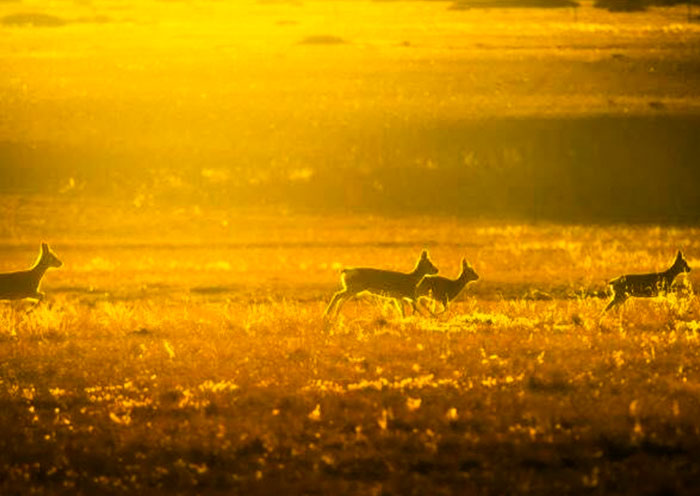
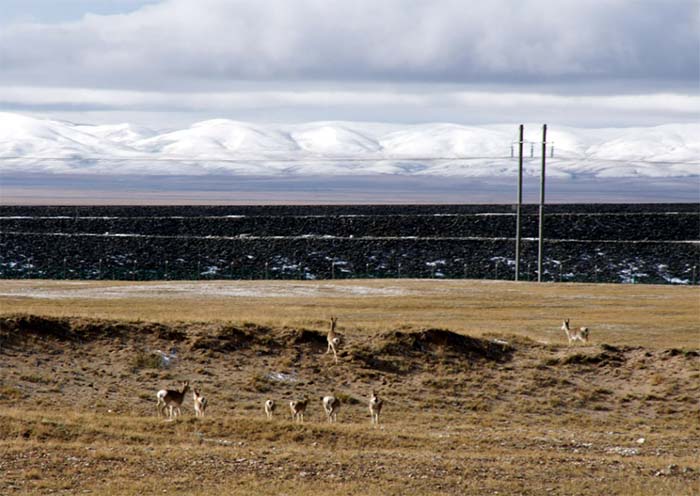
No.53 Fanjingshan
Fanjingshan, a UNESCO World Heritage site in China, is celebrated for its unique wildlife and striking mountain landscapes. It's a key area for conservation, home to rare plants and animals like the Guizhou snub-nosed monkey.
No.54 Migratory Bird Sanctuaries along the Coast of Yellow Sea-Bohai Gulf of China
The Yellow Sea-Bohai Gulf in China is a UNESCO site vital for countless migratory birds seeking food and rest on their long journeys. It's key for bird conservation.
No.55 Badain Jaran Desert - Sand Mountain and Lake Group
In Alxa, the Badain Jaran Desert was listed as a World Natural Heritage site in 2024. It is China's second largest shifting sand desert. The Badain Jaran Desert - Sand Mountain and Lake Group World Natural Heritage site includes the world's most densely packed tall sand mountains, the world's highest stable sand dunes, and 144 unique inter-dune lakes. This complex landscape of interwoven features holds high aesthetic value and perfectly records. It reflects regional geological structures, climatic changes, geomorphological evolution, and hydrogeological changes, making it a globally representative area for studying desert development and aeolian geomorphological
UNESCO World Cultural and Natural Heritage Sites in China (4)
| World Cultural and Natural Heritage Sites (4 sites) | Year | Location |
|---|---|---|
| Mount Tai | 1987 | Tai’an, Shandong |
| Mount Huangshan | 1990 | Anhui |
| Mount Wuyi | 1999 | Fujian |
| Mount Emei Scenic Area, including Leshan Giant Buddha Scenic Area | 1996 | Sichuan |
No.56 Mount Tai
Mount Tai, or Taishan, is a famous mountain in Shandong, China, recognized by UNESCO for its cultural and natural significance. It's been a place of worship and ceremonies for thousands of years, influencing Buddhism and Taoism. The mountain is rich in history with many ancient temples and inscriptions. It also has diverse plants and wildlife, with stunning views of peaks and cliffs. Mount Tai is a symbol of Chinese culture, drawing visitors for its beauty and spiritual heritage.
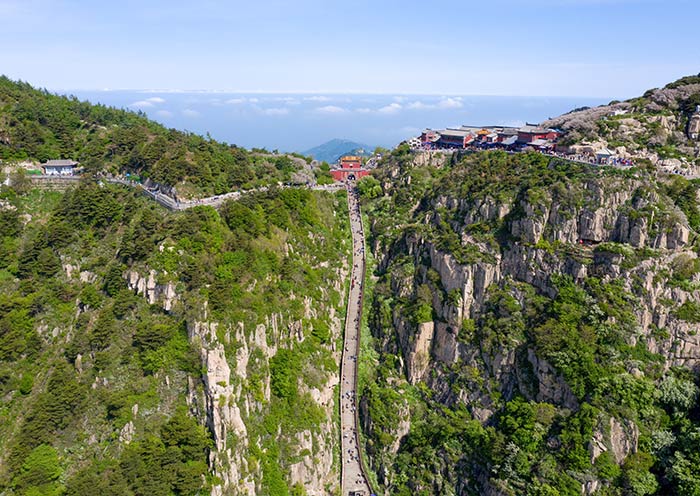
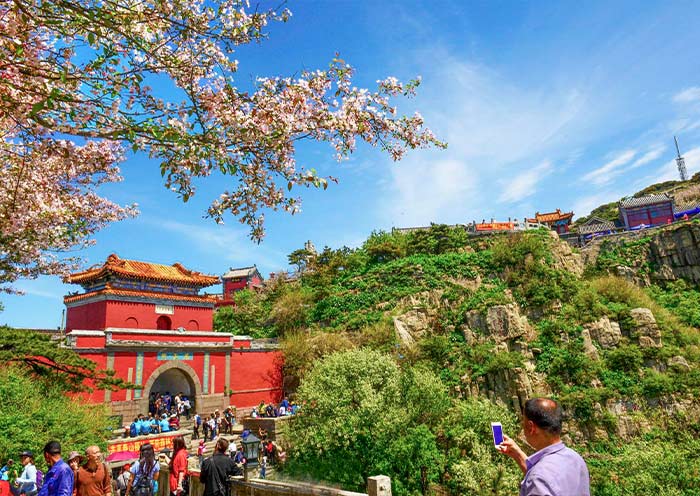
No.57 Huangshan
Huangshan, known as the Yellow Mountains, is located in Anhui Province, China. It's celebrated for its breathtaking scenery, distinctive granite peaks, pine trees that jut out at dramatic angles, and a sea of clouds that frequently shrouds the mountains, creating an ethereal atmosphere that has been immortalized in traditional Chinese paintings and literature.
Designated a UNESCO World Heritage site in 1990, Huangshan spans an area of approximately 154 square kilometers and features numerous hot springs, waterfalls, and clear creeks, all of which contribute to its exceptional beauty.
has been a magnet for poets, artists, and monks for centuries, who are drawn by its mystical landscapes and serene environment. The mountains have directly influenced the development of Chinese landscape painting and literature, particularly during the Tang and Song dynasties. For visitors and hikers today, it offers a unique blend of natural wonder, art, and history.
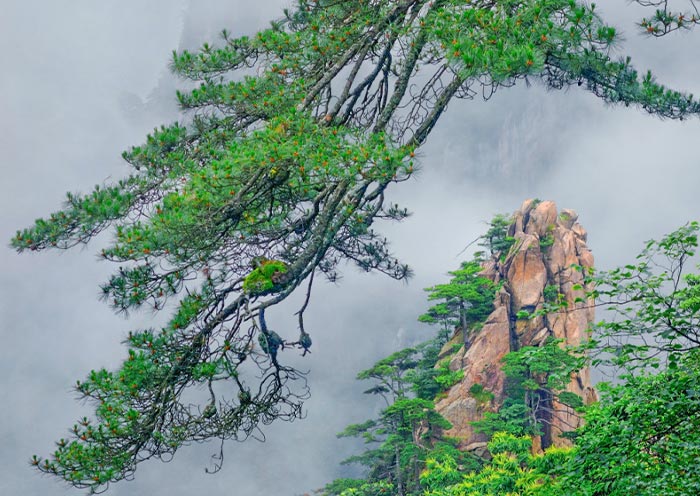
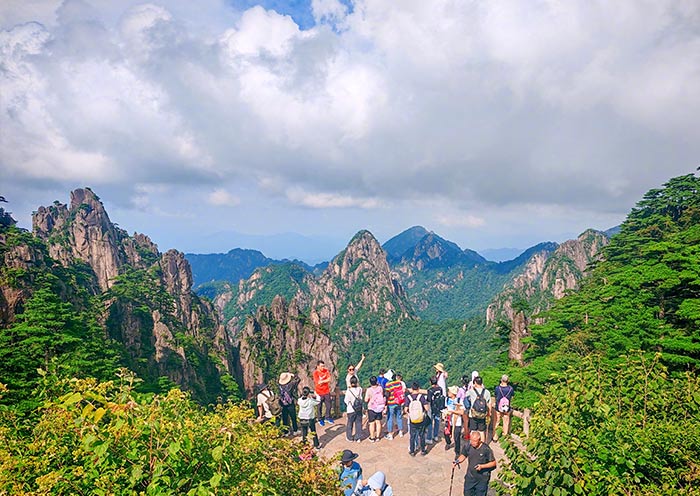
No.58 Mount Emei
Mount Emei, located in Sichuan Province, China, is one of the Four Sacred Buddhist Mountains of China. It was inscribed as a UNESCO World Heritage site in 1996, together with the Leshan Giant Buddha, which is situated nearby.
The mountain's natural beauty is complemented by its cultural significance; it is considered a place of enlightenment and has been a pilgrimage site for over two thousand years.
Mount Emei is studded with Buddhist temples and monasteries, interspersed among its lush forests and clear streams. The Golden Summit, the mountain's highest point, is famous for the four spectacles: the sea of clouds, the Buddha's aura, the holy lamp, and the sunrise, which attract numerous tourists and pilgrims each year.
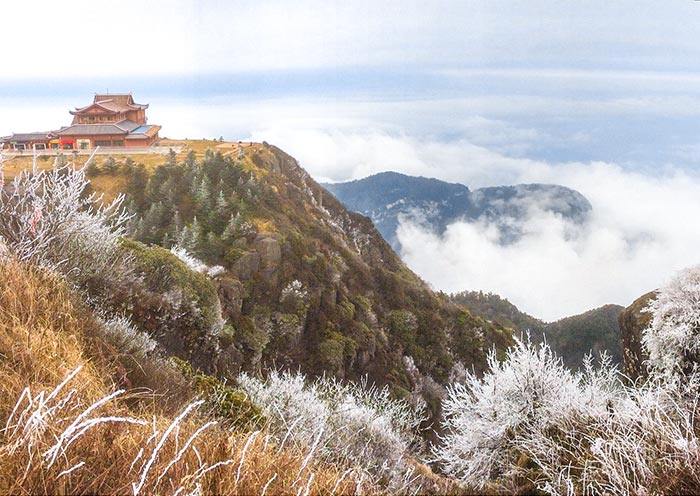
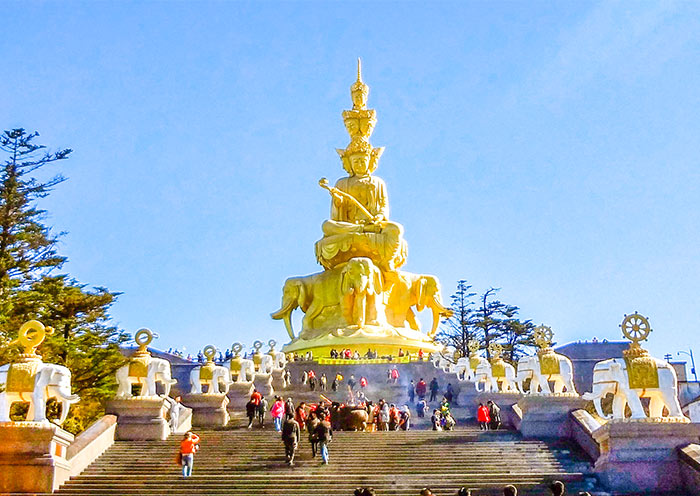
No.59 Mount Wuyi
Mount Wuyi, located in the northern Fujian province of China, is renowned for its spectacular river valleys, pristine forests, and the cultural significance of its ancient ruins and temples.
The area is famous for its tea, including the South China tiger and the Wuyi rock tea plants, from which the highly prized Da Hong Pao tea is harvested.
Mount Wuyi was a cradle of Neo-Confucianism. The mountain's tranquil beauty has inspired scholars and hermits for centuries. Visitors today can explore the ancient cliffside temples and the remains of historic academies, as well as enjoy rafting on the Nine Bend River, which meanders gracefully through the mountainous landscape.
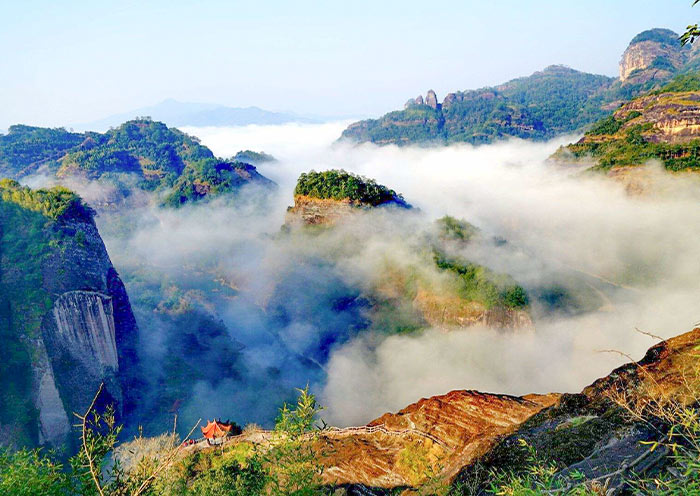
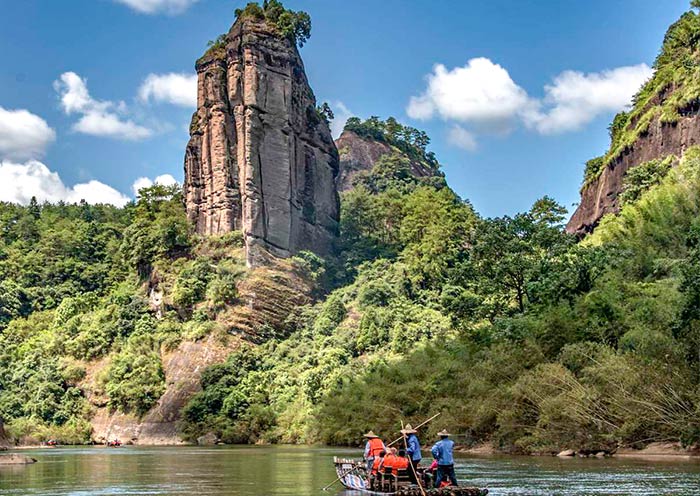
List of China World Heritage Sites
| World Heritage Sites (57 sites) | Location | Year |
|---|---|---|
| Imperial Palaces of the Ming and Qing Dynasties, including the Forbidden City and Mukden Palace | 1987, 2004 | Beijing, Shenyang |
| Mausoleum of the First Qin Emperor | 1987 | Xi'an, Shaanxi |
| Mogao Caves | 1987 | Dunhuang, Gansu |
| Mount Tai | 1987 | Tai’an, Shandong |
| Peking Man Site at Zhoukoudian | 1987 | Beijing |
| The Great Wall | 1987 | Northern China |
| Mount Huangshan | 1990 | Anhui |
| Huanglong Scenic and Historic Interest Area | 1992 | Songpan, Sichuan |
| Jiuzhaigou Valley Scenic and Historic Interest Area | 1992 | Jiuzhaigou County, Sichuan |
| Wulingyuan Scenic and Historic Interest Area | 1992 | Zhangjiajie, Hunan |
| Ancient Building Complex in the Wudang Mountains | 1994 | Hubei |
| Historic Ensemble of the Potala Palace, including the Jokhang Temple and Norbulingka | 1994, 2000, 2001 | Lhasa, Tibet |
| Chengde Mountain Resort and its Outlying Temples in Chengde | 1994 | Chengde, Hebei |
| Temple and Cemetery of Confucius and the Kong Family Mansion in Qufu | 1994 | Qufu |
| Mountain Lu National Park | 1996 | Jiujiang, Jiangxi |
| Mount Emei Scenic Area, including Leshan Giant Buddha Scenic Area | 1996 | Sichuan |
| Ancient City of Ping Yao | 1997 | Pingyao County, Shanxi |
| Classical Gardens of Suzhou | 1997, 2000 | Suzhou |
| Old Town of Lijiang | 1997 | Lijiang, Yunnan |
| Summer Palace | 1998 | Beijing |
| Temple of Heaven | 1998 | Beijing |
| Dazu Rock Carvings | 1999 | Dazu District, Chongqing |
| Mount Wuyi | 1999 | Fujian |
| Ancient Villages in Southern Anhui – Xidi and Hongcun | 2000 | Yi County, Anhui |
| Imperial Tombs of the Ming and Qing Dynasties, including the Ming tombs and the Ming Xiaoling Mausoleum | 2000, 2003, 2004 | Beijing and Nanjing, Jiangsu |
| Longmen Grottoes | 2000 | Luoyang, Henan |
| Mount Qingcheng and the Dujiangyan Irrigation System | 2000 | Dujiangyan City, Sichuan |
| Yungang Grottoes | 2001 | Datong, Shanxi |
| Three Parallel Rivers of Yunnan Protected Areas | 2003 | Yunnan |
| Capital Cities and Tombs of the Ancient Koguryo Kingdom | 2004 | Ji'an, Jilin |
| Historic Centre of Macau | 2005 | Macau |
| Yinxu | 2006 | Anyang, Henan |
| Sichuan Giant Panda Sanctuaries | 2006 | Sichuan |
| Kaiping Diaolou and Villages | 2007 | Kaiping, Guangdong |
| South China Karst | 2007,2014 | Yunnan, Guizhou, Chongqing and Guangxi |
| Fujian Tulou | 2008 | Fujian |
| Sanqingshan | 2008 | Yushan County, Jiangxi |
| Mount Wutai | 2009 | Wutai County, Shanxi |
| Historic Monuments of Dengfeng in "The Centre of Heaven and Earth" | 2010 | Dengfeng, Henan |
| China Danxia | 2010 | Hunan, Guangdong, Fujian, Jiangxi, Zhejiang, and Guizhou |
| West Lake Cultural Landscape of Hangzhou | 2011 | Hangzhou, Zhejiang |
| Site of Xanadu | 2012 | Zhenglan Banner, Xilingol League, Inner Mongolia |
| Chengjiang Fossil Site | 2012 | Chengjiang County, Yunnan |
| Xinjiang Tianshan | 2013 | Xinjiang |
| Cultural Landscape of Honghe Hani Rice Terraces | 2013 | Yuanyang County, Yunnan |
| Silk Roads: the Routes Network of Chang'an-Tianshan Corridor | 2014 | Luoyang, Lingbao of Henan; Xi'an, Bin County and Chenggu of Shaanxi; Tianshui, Yongjing, Dunhuang and Anxi of Gansu; Turpan, Jimsar and Kuqa of Xinjiang |
| Grand Canal | 2014 | Beijing, Tianjin, Hebei, Shandong, Jiangsu, Zhejiang, Anhui and Henan |
| Tusi Sites | 2015 | Hunan, Hubei and Guizhou |
| Zuojiang Huashan Rock Art Cultural Landscape | 2016 | Guangxi |
| Hubei Shennongjia | 2016 | Hubei |
| Qinghai Hoh Xil | 2017 | Qinghai |
| Gulangyu: a Historic International Settlement | 2017 | Xiamen, Fujian |
| Fanjingshan | 2018 | Tongren, Guizhou |
| Archaeological Ruins of Liangzhu City | 2019 | Hangzhou and Deqing County, Zhejiang |
| Migratory Bird Sanctuaries along the Coast of Yellow Sea-Bohai Gulf of China | 2019 | Yancheng, Jiangsu |
| Quanzhou: Emporium of the World in Song-Yuan China | 2021 | Quanzhou, Fujian |
| Cultural Landscape of Old Tea Forests of the Jingmai Mountain in Pu’er | 2023 | Yunnan |
| Beijing Central Axis | 2024 | Beijing |
| Badain Jaran Desert - Sand Mountain and Lake Group | 2024 | Xijiang |
